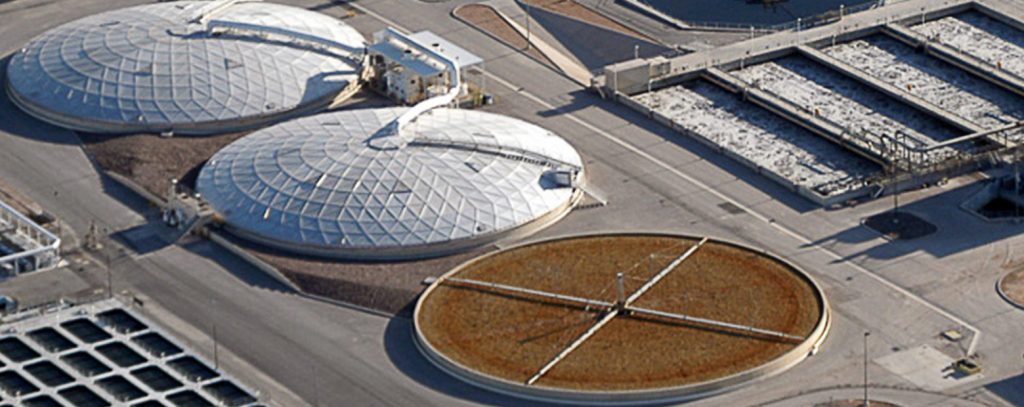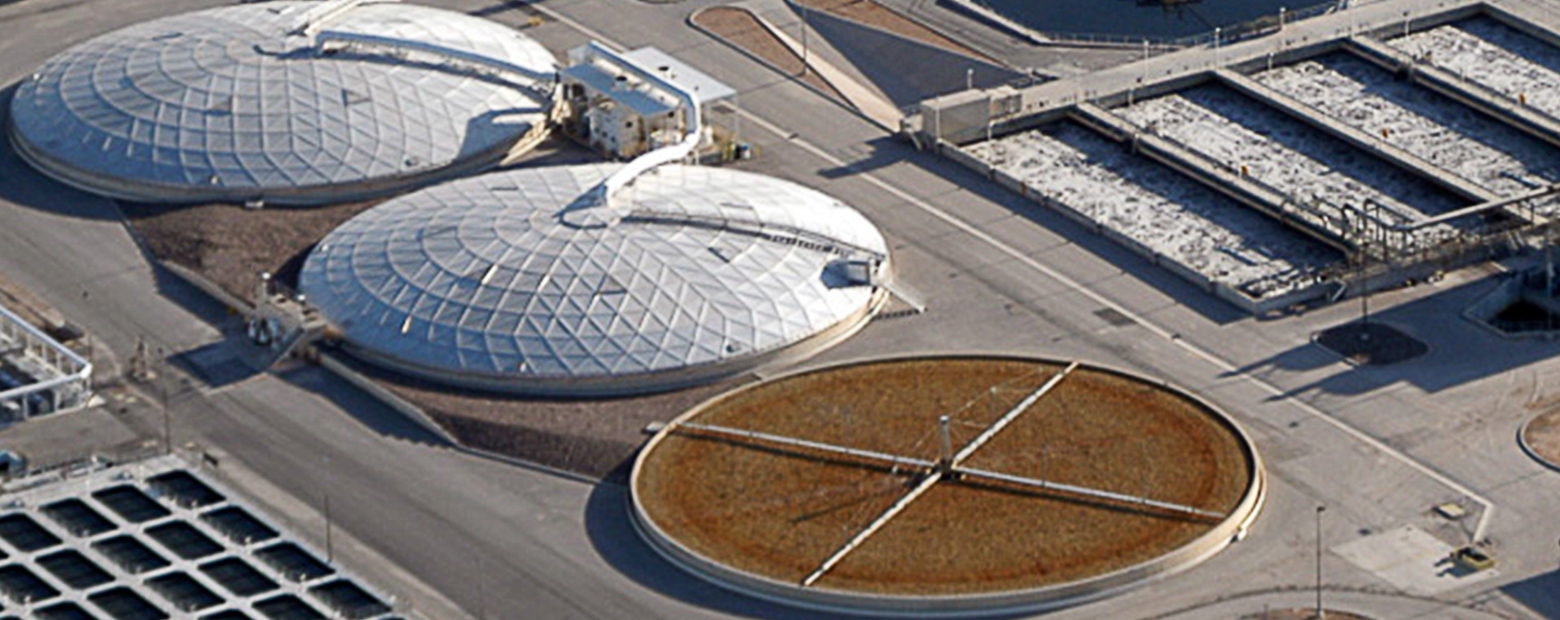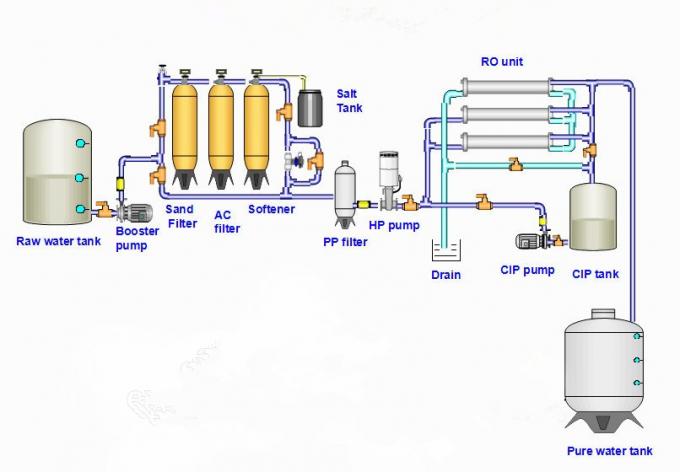- Wastewater sludge
When wastewater is treated using various mechanical, biological, and physiochemical methods to remove organic and inorganic pollutants to levels required by the permitting authority, the sludge produced will also vary in quantity and characteristics from one treatment plant to another.
1.1Types of sludge
Types of sludge and other solids, such as screenings, grit, and scum, in a wastewater treatment plant vary according to the type of plant and its method of operation. The sources and types of solids generated in a treatment plant with primary, biological, and chemical treatment facilities are illustrated in Figure 1.
Wastewater sludge can be classified generally as primary, secondary (also called biological), and chemical. Sludge contains settleable solids such as (depending on the source) fecal material, fibers, silt, food wastes, biological flocs, organic chemical compounds, and inorganics, including heavy metals and trace minerals. The sludge is raw sludge when it is not treated biologically or chemically for volatile solids or pathogen reduction. When the sludge is treated, the resulting biosolids can be classified by the treatment, such as aerobically digested (mesophilic and thermophilic), anaerobically digested (mesophilic and thermophilic), alkaline stabilized, composted, and thermally dried. The treated sludge can be only primary, secondary, or chemical, or a mixture of any two or three of the sludge’s.

1.1.1 Primary Sludge
Most wastewater treatment plants use the physical process of primary settling to remove settleable solids from raw wastewater. In a typical plant with primary settling and a conventional activated sludge secondary treatment process, the dry weight of the primary sludge solids is about 50% of that for the total sludge solids. The total solids concentration in raw primary sludge can vary between 2 and 7%. Compared to biological and chemical sludges, primary sludge can be dewatered rapidly because it is comprised of discrete particles and debris and will produce a drier cake and give better solids capture with low conditioning requirements. However, primary sludge is highly putrescible and generates an unpleasant odor if it is stored without treatment.
1.1.2 Secondary Sludge
Secondary sludge, also known as biological sludge, is produced by biological treatment processes such as activated sludge, membrane bioreactors, trickling filters, and rotating biological contactors. Plants with primary settling normally produce a fairly pure biological sludge as a result of the bacteria consuming the soluble and insoluble organics in secondary treatment system. The sludge will also contain those solids that were not readily removed by primary clarification. Secondary sludge generated in plants that lack primary settling may contain debris such as grit and fibers. Activated sludge and trickling filter sludge generally contain solids concentrations of 0.4 to 1.5% and 1 to 4%, respectively, in dry solids weight. Biological sludge is more difficult to dewater than primary sludge because of the light biological flocs inherent in biological sludge.
1.1.3 Chemical Sludge
Chemicals are used widely in wastewater treatment, especially in industrial wastewater treatment, to precipitate and remove hard-to-remove substances, and in some instances, to improve suspended solids removal. In all such instances, chemical sludges are formed. A typical use in removing a substance from wastewater is the chemical precipitation of phosphorus. The chemicals used for phosphorus removal include lime, alum, and “pickle liquors” such as ferrous chloride, ferric chloride, ferrous sulfate, and ferric sulfate. Some treatment plants add the chemicals to the biological process; thus, chemical precipitates are mixed with the biological sludge. Most plants apply chemicals to secondary effluent and use tertiary clarifiers or tertiary filters to remove the chemical precipitates. Some chemicals can create unwanted side effects, such as depression of pH and alkalinity of the wastewater, which may require the addition of alkaline chemicals to adjust these parameters.
1.1.4 Other Wastewater Residuals
In addition to sludge, three other residuals are removed in wastewater treatment process: screenings, grit, and scum. Although their quantities are significantly less than those of sludge in volume and weight, their removal and disposal are very important.
Screenings include relatively large debris, such as rags, plastics, cans, leaves, and similar items that are typically removed by bar screens. Quantities of screenings vary from 4 to 40 mL/m3 (0.5 to 5 ft3/MG) of wastewater. The higher quantities are attributable to wastes from correctional institutions, restaurants, and some food-processing industries. Screenings are normally hauled to a landfill. Some treatment plants return the screenings to the liquid stream after marcerating or comminuting. This is not recommended because many of the downstream pieces of equipment, such as mixers, air diffusers, and electronic probes, are subject to fouling from reconstituted rags and strings.
Grit consists of heavy and coarse materials, such as sand, cinders, and similar inorganic matter. It also contains organic materials, such as corn, seeds, and coffee grinds. If not removed from wastewater, grit can wear out pump impellers and piping. Grit is typically removed in grit chambers. In some treatment plants, grit is settled in primary clarifiers along with primary sludge and then separated from the sludge in vortex-type grit separators. The volume of grit removed varies from 4 to 200 mL/m3 (0.5 to 27 ft3/MG) of wastewater. The higher quantities are typical of municipalities with combined sewer systems and sewers that contribute excessive infiltration and inflow.
Grit is almost always landfilled.
Scum is the product that is skimmed from clarifiers. Primary scum consists of fats, oils, grease, and floating debris such as plastic and rubber products.
It can build up in piping, thereby restricting flow and increasing pumping costs, and can foul probes, flow elements, and other instruments in the waste stream. Secondary scum tends to be mostly floating activated sludge or biofilm, depending on the type of secondary treatment used. The quantity and moisture content of scum typically are not measured. It may be disposed of by pumping to sludge digesters, concentrating, and then incinerating with other residuals, or drying and then landfilling.

- Sludge Processing
The purpose of primary and secondary treatment is to remove as much organic solids from the liquid as possible while concentrating solids in a much smaller volume for ease of handling and disposal. Primary sludge has a typical solids content of 4 – 6%. Sludge processing reduces the solids content of this sludge through biological processes and removes more of the liquid content of it prior to disposal.
The overall sludge processing investment cost at the typical wastewater treatment plant is about one-third of the total investment in the treatment plant. However, based on the individual wastewater treatment plant’s processing system, operating expenses in sludge processing typically amount to even a larger portion of the total plant operating costs. To reduce plant operating costs, it is essential to have a properly designed and efficiently operated sludge processing stage.
The design options for each process will be dependent on the type, size, and location of the wastewater treatment plant, and the solid disposal options available. The design must be able to handle the amount of sludge produced and converted economically to a product that is environmentally acceptable for disposal.
As with water processing, sludge process methods will be determined by the specific constraints and requirements of the individual wastewater treatment plant. Our schematic
covers the general processing steps found in a typical plant.
There will be many plant-to-plant variations that are not illustrated in our article highlights the processes of a typical wastewater treatment plant. The bottom half illustrates the Sludge Processing flowchart.
The typical sludge processing steps include:
- Sludge Thickening
- Sludge Conditioning
- Dewatering
- Disposal

Sludge Thickening
To optimize the sludge conditioning stage, it is important to maximize the solids content of the materials decanted from the water processing stages. The waste activated sludge, scum, and primary sludge can be thickened to reduce the liquid content prior to sludge conditioning. Due to the varying physical nature and liquid content of these materials, facilities may use different thickening processes and equipment for these three materials. In some cases, the primary sludge may not even be thickened and will be pumped directly to
sludge conditioning.
The intent is to optimize the downstream processing capabilities.
The four most common thickening methods include gravity settling, gravity belt thickening, dissolved air flotation, and centrifuge thickening.
The recovered liquid or supernatant from thickening is pumped back into the aeration tank or to the beginning of the water processing stage and is reprocessed.

Sludge Conditioning
Sludge conditioning is a key stage in the reduction of solids prior to disposal. Based on the size and location of the facility five common methods are typically utilized; chemical
treatment, anaerobic digestion stabilization, aerobic digestion stabilization, lagoon storage, and heat treatment.
Many facilities will have some type of aerobic or anaerobic digestion stage prior to dewatering. The purpose of sludge digestion is to convert bulky odorous sludge into a relatively inert material that can be rapidly dewatered without obnoxious odors.
Thickened waste activated sludge, scum, and primary sludge are pumped into the digester. In anaerobic digestion, the digester uses the naturally occurring anaerobic microorganisms
to break down organic materials into methane and carbon dioxide gases. The sludge is heated to 37°C (100°F) and agitated continuously in the digester to improve the rate of digestion.
There are two different anaerobic processes, single stage and two-stage. Single stage digesters utilize one digester (tank) to digest the sludge, capture methane gas and store the sludge until it is transferred to the dewatering process
Two-stage anaerobic digestion uses a primary and secondary digester. The primary digester is heated and utilizes mixers to completely agitate the sludge, which maximizes sludge digestion. The secondary digester is not agitated and is utilized for gravity thickening and storage of the digested sludge. The secondary digester typically incorporates a floating
gas dome for methane gas collection and supernatant is pumped out to increase solids content.
Anaerobic digestion is a biological process that breaks down a significant amount of organic solids in the sludge and produces methane gas that is utilized as a fuel for the plant.
Consequently, the volume of final sludge is greatly reduced, which in turn reduces the cost for sludge disposal.
The process also reduces the level of pathogenic microorganisms enabling digested sludge to be classified as biosolids that can be utilized as a soil conditioner or fertilizer.
Sludge can also be stabilized by long-term aeration that biologically destroys volatile solids. An aerobic digester is normally operated by continuously feeding raw sludge with intermittent supernatant and digested sludge withdrawals.
The digested sludge is continuously aerated during filling and for the specified digestion period after the tank is full.
Aeration is then discontinued to allow the stabilized solids to settle by gravity. Supernatant is decanted and returned to the head of the treatment plant, and a portion of the gravity thickened sludge is removed for dewatering.
The next step for the stabilized sludge is dewatering.

Dewatering
Dewatering is the final stage prior to sludge disposal. The goal is to economically remove as much liquid as possible from the sludge or digested sludge prior to disposal. The most common method of dewatering utilizes a belt filter press. The belt filter press has two continuous porous belts that pass over a series of rollers to squeeze water out of the sludge that is compressed between the two belts. Polymers are typically added to the process to enhance dewatering capabilities. Centrifuges are also used for dewatering, typically, in larger wastewater treatment plants.
Any supernatant that is removed in the dewatering process is returned to the beginning of the treatment plant for reprocessing.
Disposal
Digested sludge that is processed into biosolids can be used to spread on farmland as a soil conditioner or can be further processed as fertilizer. It can also be disposed as landfill.
Sludge can also be incinerated and the remaining ash is disposed as landfill. Economics and environmental regulations will be the primary drivers in what disposal method an individual wastewater treatment plant uses.

By
Ahmed Ahmed Elserwy
Water & Environmental Consultant
Ain Shames University, Faculty of Science
References
METCALF & EDDY (1991). Wastewater engineering: treatment, disposal and reuse.
.




